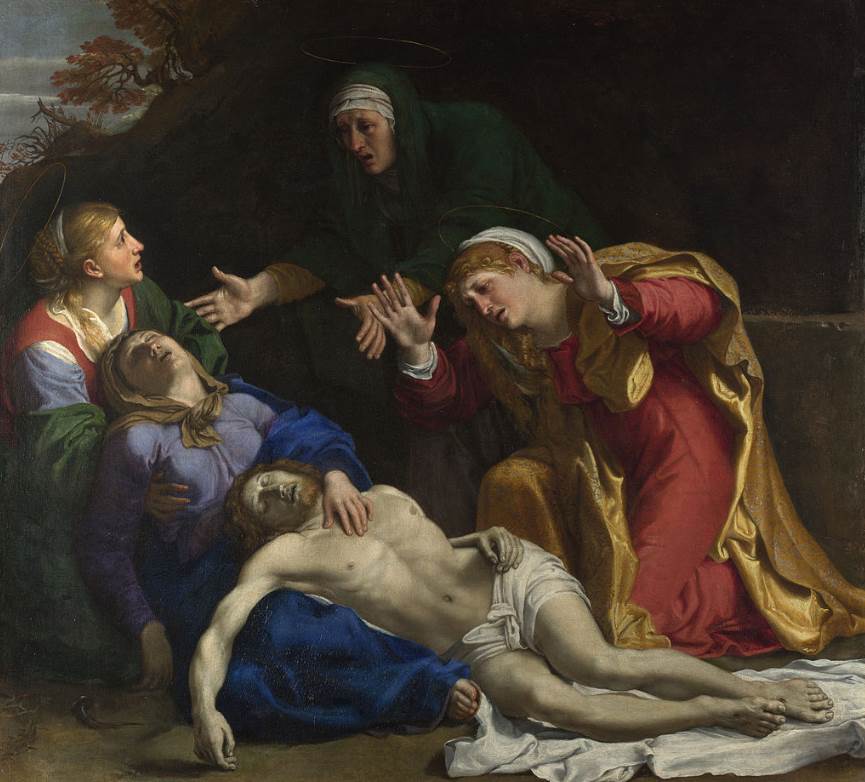The Baroque era produced several artists who have left a permanent mark on the world of art.
They added theatrical drama, dynamism, and splendid colors to their works to enhance the grandeur of their time.
Annibale Carracci (1560-1609) was one of the leading Baroque artists and a pioneer in the transition away from the Renaissance and Mannerist ideals in the late 16th and early 17th centuries.
A native of Bologna, the largest city in the Emilia-Romagna region in northern Italy, Annibale and his brother Ludovico borrowed elements of both the north and south to develop the Bolognese School of painting.
In this article, you’ll discover some of the most famous Annibale Carracci paintings. These are artworks that influenced numerous artists who followed in his footsteps.
1. The Loves of the Gods
- Date created: 1597-1608
- Dimensions: Covers the entire vault of the Farnese Gallery
- Location: Palazzo Farnese, Rome, Italy
The Loves of the Gods is without a doubt the most impressive of all Annibale Carracci paintings. It covers the entire ceiling of the Farnese Gallery, an incredible space in the Palazzo Farnese in central Rome. This opulent Renaissance building now serves as the French Embassy and Michelangelo had a hand in its design in the 16th century.
The fresco cycle can be described as Carracci’s Magnum Opus as he worked on it for over a decade between 1597 and 1608. The entire cycle was only completed a year before he passed away. The frescoes depict multiple scenes of gods indulging in earthly pleasures and have been greatly admired ever since they were completed.
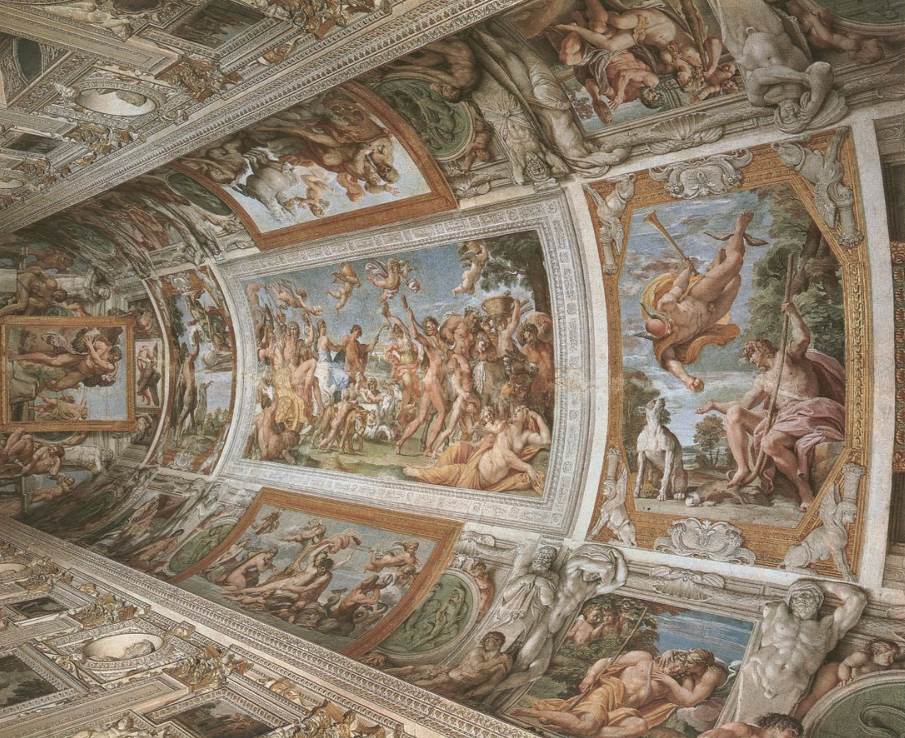
2. Domine quo Vadis?
- Date created: 1601-1602
- Dimensions: 77 × 56 centimeters (30 × 22 inches)
- Location: National Gallery, London, United Kingdom
Domine quo Vadis is the title of a painting also referred to as “Christ appearing to Saint Peter on the Appian Way.” It depicts a story mentioned in the Acts of Peter, writings from the late 2nd century A.D. of which the origins are unknown.
These are some of the earliest of the apocryphal Acts of the Apostles in Christianity. The painting depicts the story of Saint Peter who is fleeing the city of Rome along the ancient Via Appia. He encounters Christ who is carrying his cross and who is walking in the other direction. When Saint Peter asks him why he answered “I am going to Rome to be crucified again.”
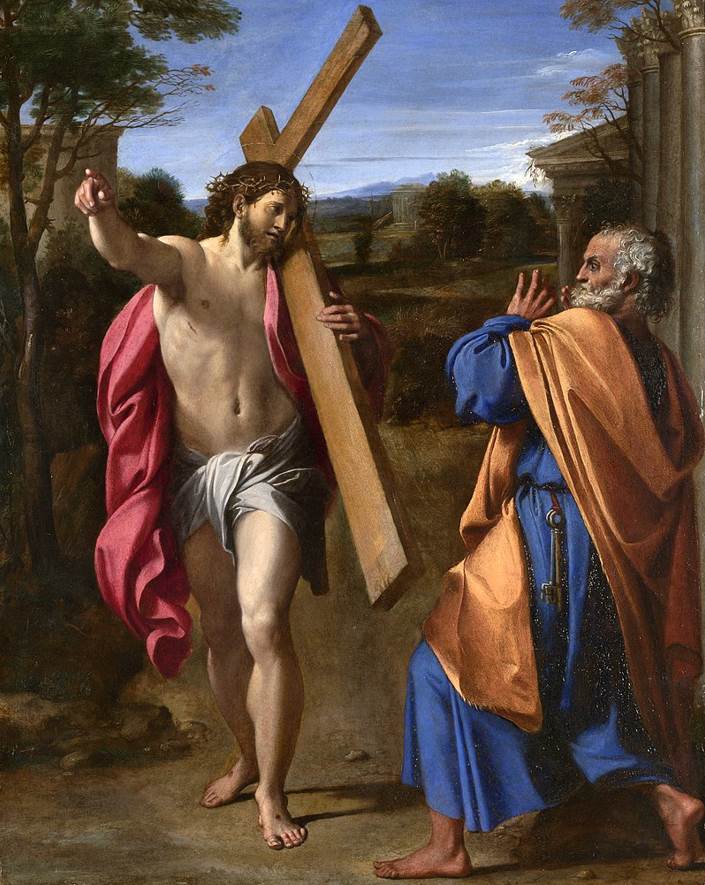
3. Assumption of the Virgin
- Date created: 1600-1601
- Dimensions: 245 × 155 centimeters (96 × 61 inches)
- Location: Santa Maria del Popolo, Rome, Italy
The Assumption of the Virgin is one of the monumental paintings that decorate the Cesari Chapel inside Santa Maria del Popolo Basilica in Rome. Annibale Carracci was a contemporary of Caravaggio (1571-1610), the troubled artist who produced fascinating paintings using an extreme contrast between light and shadow known as tenebrism.
There’s no better place in the world to admire the difference in style between both Baroque masters than in this relatively small chapel. The influence of the Venetian colorists on the world of Carracci is evident in this work which depicts a common subject in the history of religious art.

4. The Beaneater
- Date created: 1583-1584
- Dimensions: 57 × 68 centimeters (22 × 27 inches)
- Location: Galleria Colonna, Rome, Italy
The Beaneater is an Annibale Carracci painting that was completed when the artist was still in his early twenties. It depicts a common scene of a man devouring beans and incorporates various still life elements that the artist placed on the table.
The realistic depiction of the items and main figure was highly popular in his native Bologna at the time and was probably influenced by the genre paintings of Flemish artists and Dutch artists. Other Italian painters such as Vincenzo Campi and Bartolomeo Passarotti also produce similar works during this period in the late 16th century.
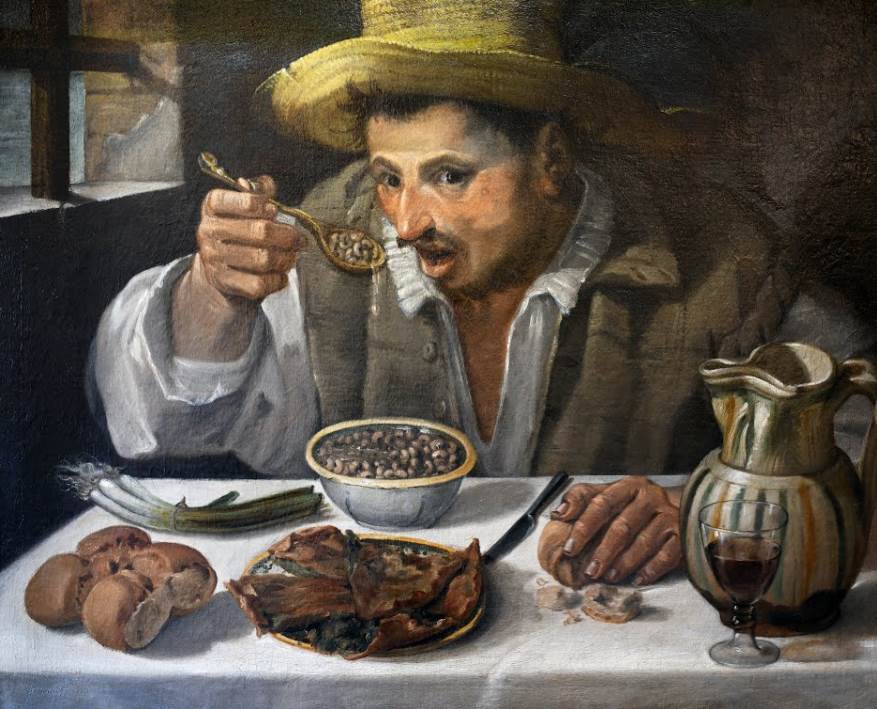
5. Butcher’s Shop
- Date created: Early 1580s
- Dimensions: 185 × 266 centimeters (73 × 105 inches) / 59.7 × 71 centimeters (23.5 × 27 inches)
- Location: Christ Church Picture Gallery, Oxford, the United Kingdom / Kimbell Art Museum, Forth Worth, United States
Butcher’s Shop is the title of two paintings with a similar subject that can be placed in the same type of genre paintings as The Beaneater. They realistically depict the scene inside a contemporary butcher’s shop in the artist’s native Bologna.
The painting located at the Christ’s Church Picture Gallery is one of the most remarkable examples of early Italian genre paintings due to its sheer size. It entered the collection of Charles I of England in the 17th century and once hung in the kitchen of Christ Church in Oxford until the 20th century.
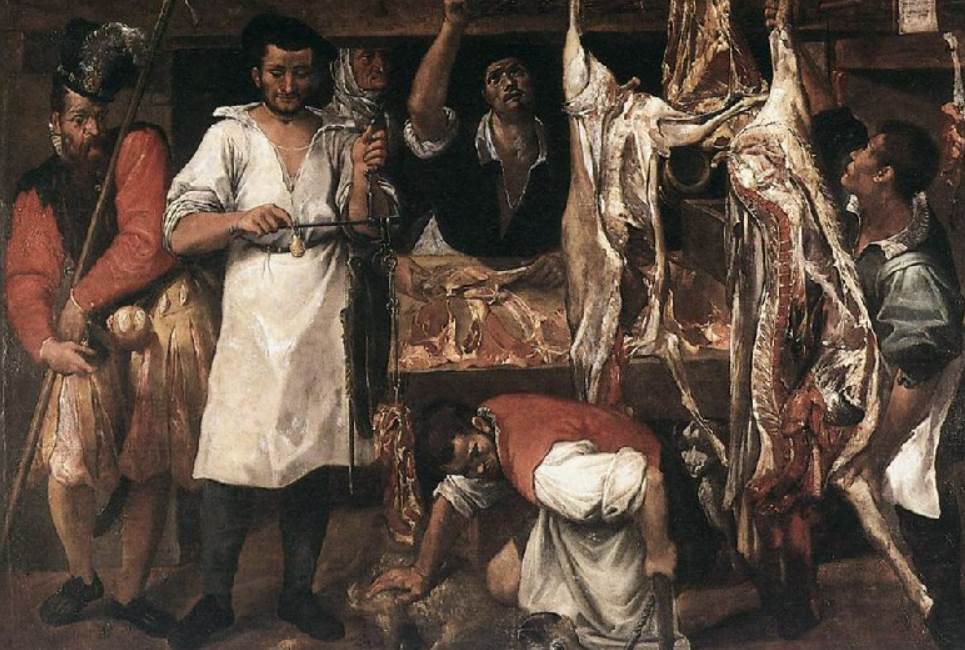
6. Madonna Enthroned with St Matthew
- Date created: 1588
- Dimensions: 384 x 255 centimeters (151.18 x 100.3 inches)
- Location: Gemäldegalerie Alte Meister, Dresden, Germany
Madonna Enthroned with St Matthew is also sometimes referred to as “Madonna and Child with Saints.” It was originally commissioned to serve as an altarpiece of the chapel inside the Basilica of San Prospero in Reggio Emilia. It was bought by Frederick Augustus II, Elector of Saxony in the Holy Roman Empire, in the 18th century.
The painting was heavily influenced by a famous Paolo Veronese painting called “The Mystic Marriage of St Catherine” (1571). He did refrain from using the same vivid color scheme that defined the paintings by the Venetian Mannerist master.
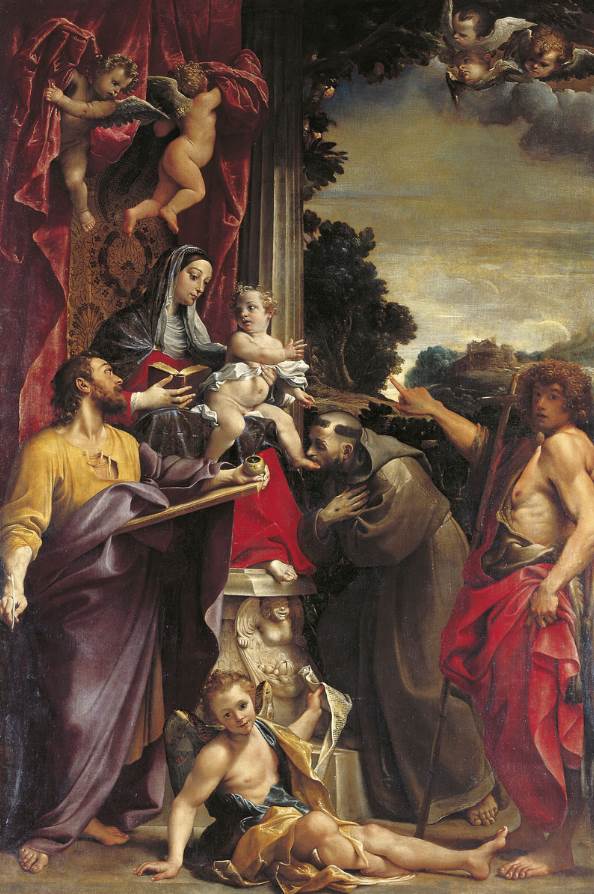
7. An Allegory of Truth and Time
- Date created: 1584-1585
- Dimensions: 130 x 169.6 centimeters (51.1 x 66.7 inches)
- Location: Hampton Court Palace, London, United Kingdom
An Allegory of Truth and Time is another Carracci painting that was completed while the artist was still in his twenties. It’s a mysterious work because it wasn’t mentioned anywhere, including in the artist’s biography, and only surfaced in England in the 19th century.
That’s remarkable because it was probably already present in the country in the early 18th century, a period in which it was thought to be a work by an obscure artist. The painting is believed to be influenced by the world of Antonio Correggio (1489-1534), a Renaissance master from Parma.

8. River Landscape
- Date created: 1590
- Dimensions: 88.3 × 148.1 centimeters (34.8 × 58.3 inches)
- Location: National Gallery of Art, Washington D.C., United States
River Landscape is a painting that further emphasizes the versatility that Annibale Carracci possessed as an artist. He managed to paint immense mythological and historical paintings, as well as still lifes and landscapes.
It’s a typical landscape painting by Carracci as the perspective is enhanced by trees situated in the foreground, a trademark of the Italian painter. It’s believed that he completed the work in his studio based on sketches that were produced outdoors.

9. Venus, Adonis, and Cupid
- Date created: 1595
- Dimensions: 212 x 268 centimeters (83.4 x 105.5 inches)
- Location: Prado Museum, Madrid, Spain
Venus, Adonis, and Cupid is an epic mythological painting that shows the influence of a large number of artists. This includes the paintings by Titian, Veronese, and Corregio. Together with his brother, he established the Bolognese School of painting.
This was an official art academy that the brothers referred to as the “Accademia degli Incamminati.” The transition between Renaissance paintings, Mannerist paintings, and a new era of Baroque paintings are highly visible in this remarkable work of art.
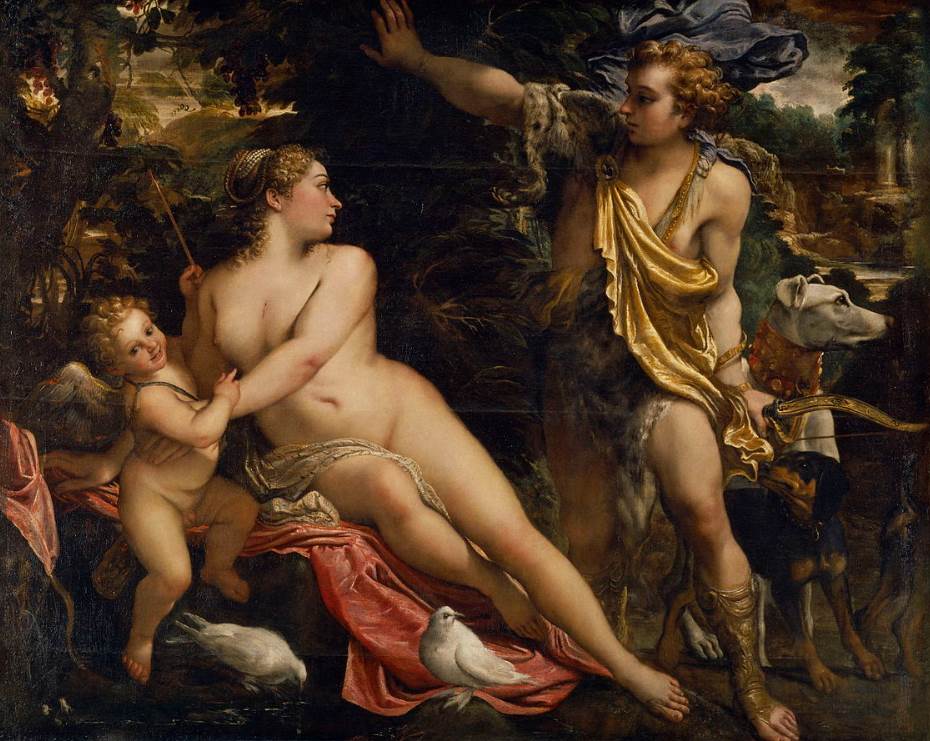
10. The Dead Christ Mourned
- Date created: 1604
- Dimensions: 92.8 × 103.2 centimeters (36.5 × 40.6 inches)
- Location: National Gallery, London, United Kingdom
The Dead Christ Mourned is also known by various other names such as “Lamentation of Christ,” “Pietà with the Three Marys,” or simply “The Three Marys.” These names perfectly explain what is depicted as w can see the Virgin Mary, Mary Magdalene, and two other women giving over the dead body of Jesus Christ.
The painting was once part of the Orleans Collection in France and was donated to the National Gallery in London in the year 1913. It has been described as one of the most poignant expressions of grief in Baroque art, a description I can agree with.
